Three members of the Israeli Caving Club stumbled upon a pouch containing a treasure trove of silver items. The coins, bracelets, and rings were cleverly concealed in a narrow niche within the cave. These ancient artifacts are believed to date back to the time when Alexander the Great reigned, around 2,300 years ago. Archaeologists suspect that these valuables were hidden by refugees seeking to protect them during the chaos of the war that ensued following the death of Alexander the Great in 323 BC.

Among the stalactites, explorers also discovered gemstones, oil lamps, and pottery. Some of the artifacts found in the cave are believed to be around 6,000 years old. This exciting discovery comes shortly after divers unearthed 2,000 gold coins off the coast of Israel. A group of cave explorers in northern Israel stumbled upon a treasure trove of rare silver coins and jewelry dating back to the time of Alexander the Great. These 2,300-year-old treasures were hidden in a narrow crevice among pieces of broken pottery within the cave filled with stalactites. The members of the Israeli Caving Club who found them had to navigate through tight passages at the cave’s entrance to explore inside.
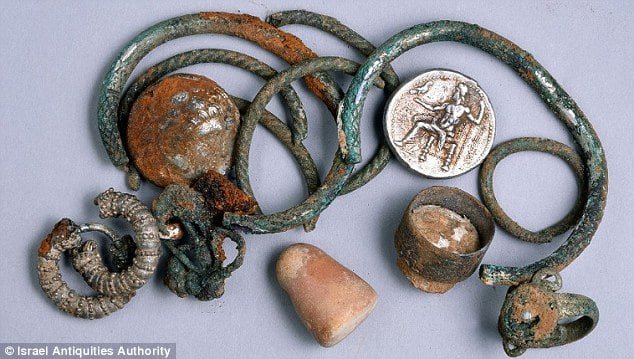
Ancient silver coins dating back to the era of Alexander the Great were discovered along with various jewelry pieces and stone weights in a cave in northern Israel by members of the Israeli Caving Club. During an exploration, one of the cave divers named Hen Zakai noticed something shiny on the cave floor, which turned out to be two ancient silver coins.
In addition to the coins, the divers found a cloth pouch containing a handful of coins, rings, bracelets, and earrings all crafted from silver and bronze. Archaeologists who visited the cave over the weekend determined that the coins were minted at the beginning of the Hellenistic Period during Alexander the Great’s reign.
It is believed that the items may have been hidden in the cave by local residents who sought refuge there during the unrest following Alexander the Great’s death in 323 BC.
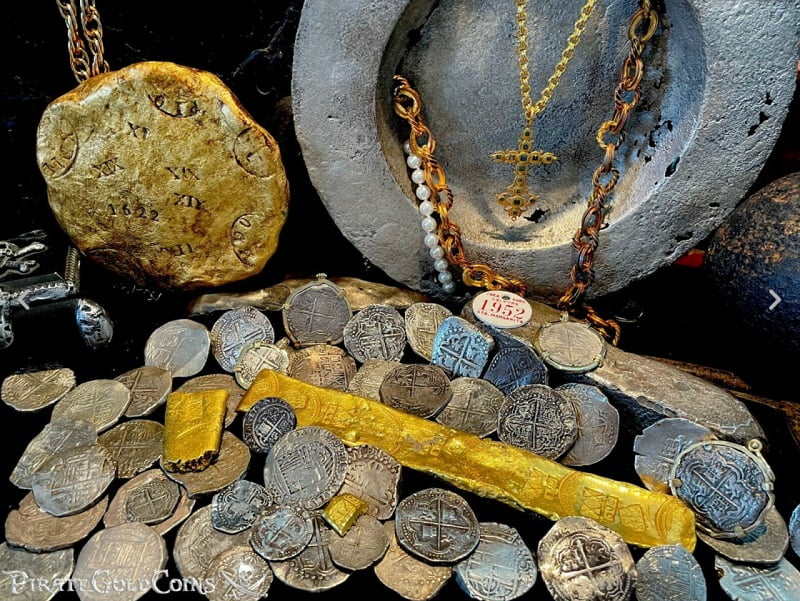
Just a month after divers found a chest full of gold coins off the coast of Caesarea near Tel Aviv, Israel, another valuable discovery has been made. A spokesperson for the Israel Antiquities Authority discussed the latest find, suggesting that the treasures found in a cave may have been hidden there by locals seeking refuge during a time of governmental unrest following the death of Alexander. It is believed that the valuables were buried in hopes of retrieval during better days, but it seems that whoever did so never returned to claim their treasure.
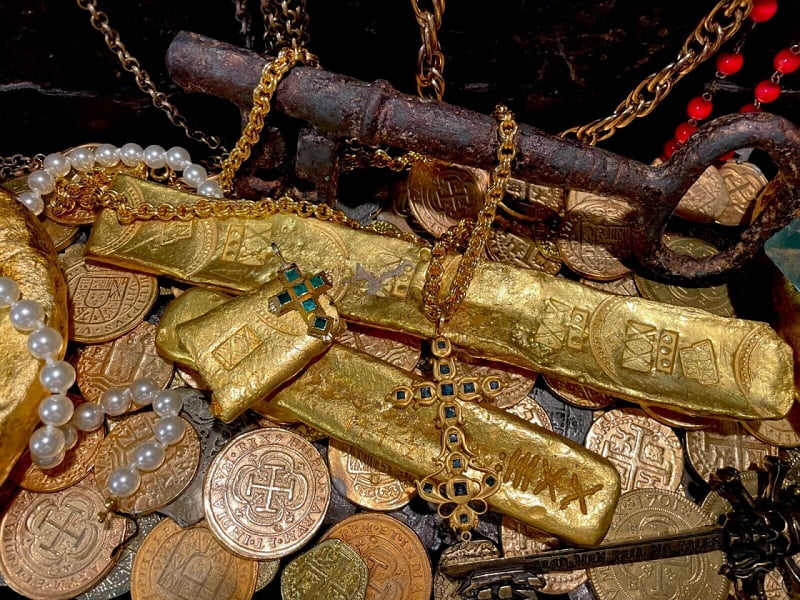
During an expedition with his father Reuven and friend Lior Halony, Mr. Zakai stumbled upon a mysterious cave whose precise location remains confidential. As they delved into the narrow passages, Zakai discovered ancient coins glittering in the light of his headlamp. They promptly reported their find to the Unit for the Prevention of Antiquities Robbery at the IAA. Subsequent investigations by officials and archaeologists revealed compelling evidence of human habitation in the caves.

The coins were discovered in a cave in northern Israel, along with agate gemstones and an oil lamp depicted in the image above.
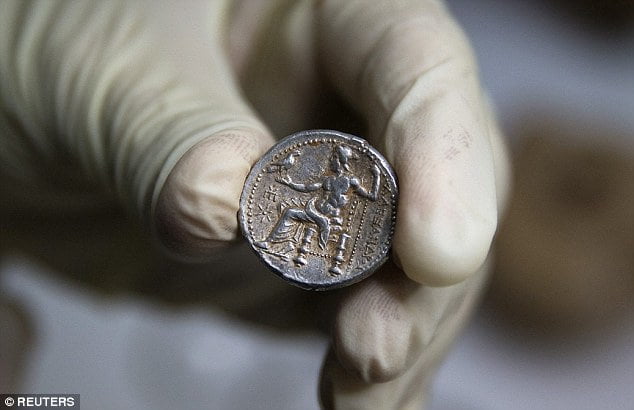
One of the coins uncovered in the cave is shown in the image above and is believed to have been hidden by refugees during an ancient war following the passing of Alexander the Great. This particular coin depicts Zeus seated with his arm raised. Several pottery vessels were also found in the cave, with some being so old that they had fused with the numerous stalactites present.
Archaeologists have determined that some of the artifacts found in the cave date back to the Chalcolithic period over 6,000 years ago. There are bronze items dating back 5,000 years, along with artifacts from the Biblical period 3,000 years ago and the Hellenistic period 2,300 years ago. One side of the coins features an image of Alexander the Great, while the other side shows Zeus seated on his throne, arm extended as if prepared to unleash his powerful lightning bolts.
Among the various items unearthed were agate gemstones and an oil lamp.
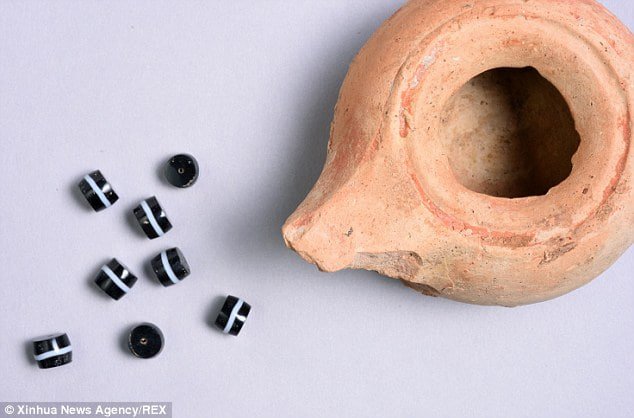
The Agate stones discovered in the cave, displayed next to a Hellenistic oil lamp, were actually part of a beautiful bead necklace.
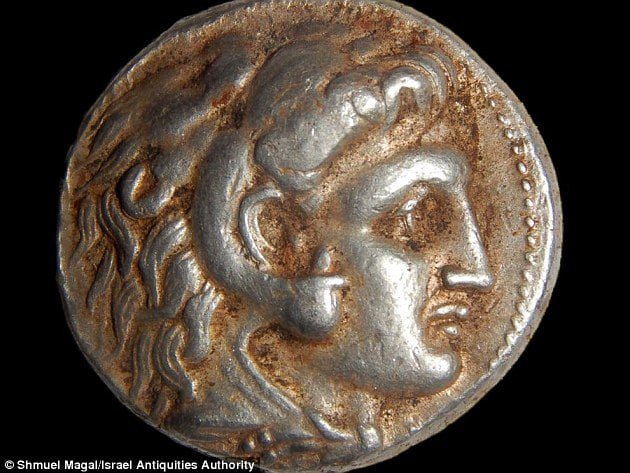
A few of the coins that were unearthed featured an imprint of Alexander the Great on one side (as seen in the image) and Zeus seated on his throne on the other side. This discovery proved valuable in assisting archaeologists with dating the treasure.
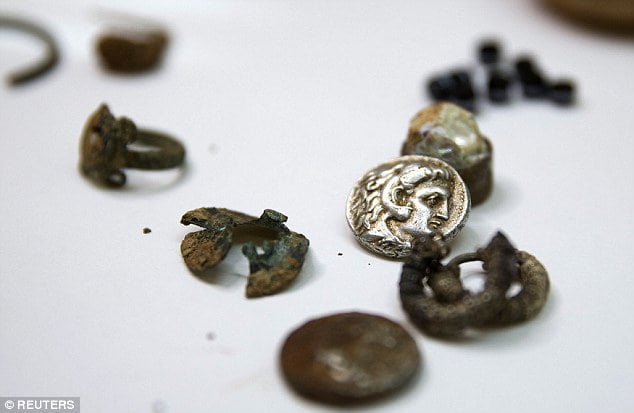
The unique silver coins, rings, and bracelets shown above are the first of their kind to be uncovered from the era of Alexander the Great’s rule over Israel, as confirmed by archaeologists who have studied the find. They believe that there may be more artifacts waiting to be discovered within the cave and are planning to further explore it.
Amir Ganor, the head of the Unit for the Prevention of Antiquities Robbery, praised the three members of the caving club for promptly notifying the authorities about their discovery. Earlier in February, the Israel Antiquities Authority announced the discovery of a chest containing 2,000 gold coins dating back over a thousand years on the seabed of the ancient harbor of Caesarea by divers.
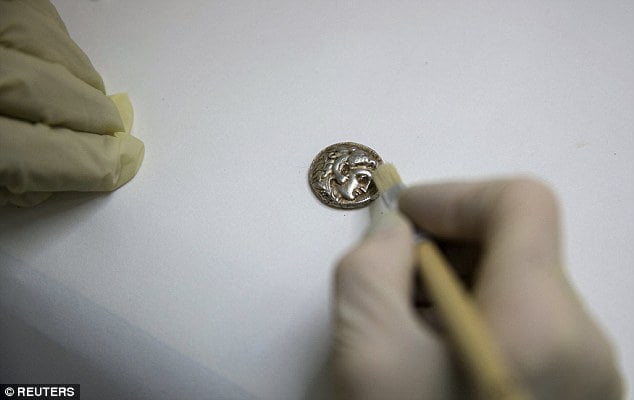
Historians believe that the coins, one of which is displayed above, played a vital role in accurately dating the treasure that was found.
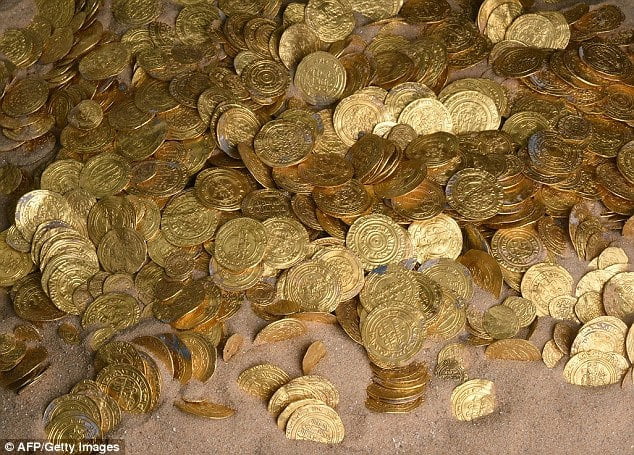
Just a month after divers found 2,000 gold coins off the coast of Caesarea, another treasure trove has been discovered in a cave in northern Israel. This latest find follows the previous discovery of gold coins on the sea floor of the ancient harbor in Caesarea, located just north of Tel Aviv and south of Haifa. The importance of these archaeological discoveries was immediately recognized by the finders who reported their findings to the Israel Antiquities Authority (IAA) right away.
This recent trend of citizens reporting significant archaeological discoveries is commendable, as it allows researchers at the IAA to expand their knowledge of the development of society and culture in the Land of Israel in ancient times. With the help of these aware citizens, the existing archaeological knowledge is constantly being enriched.

In the cave, a discovery was made of a silver ring with a crystal set in it.